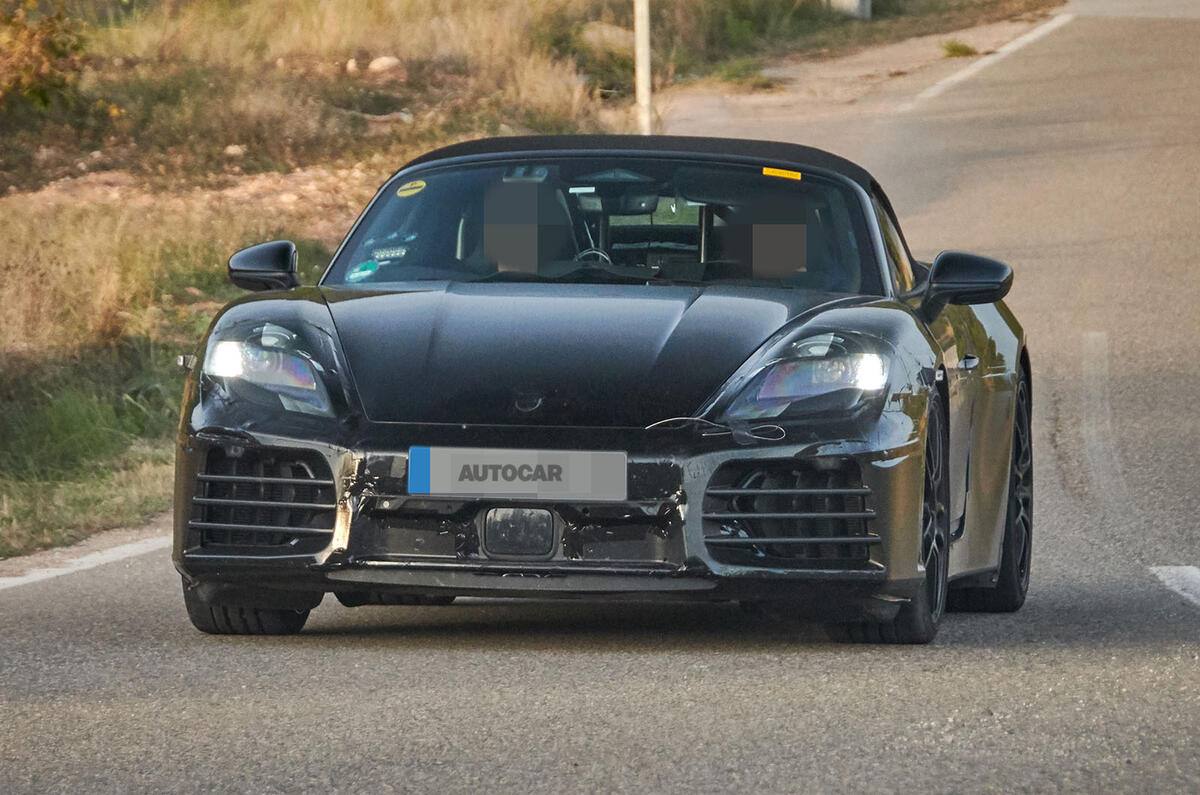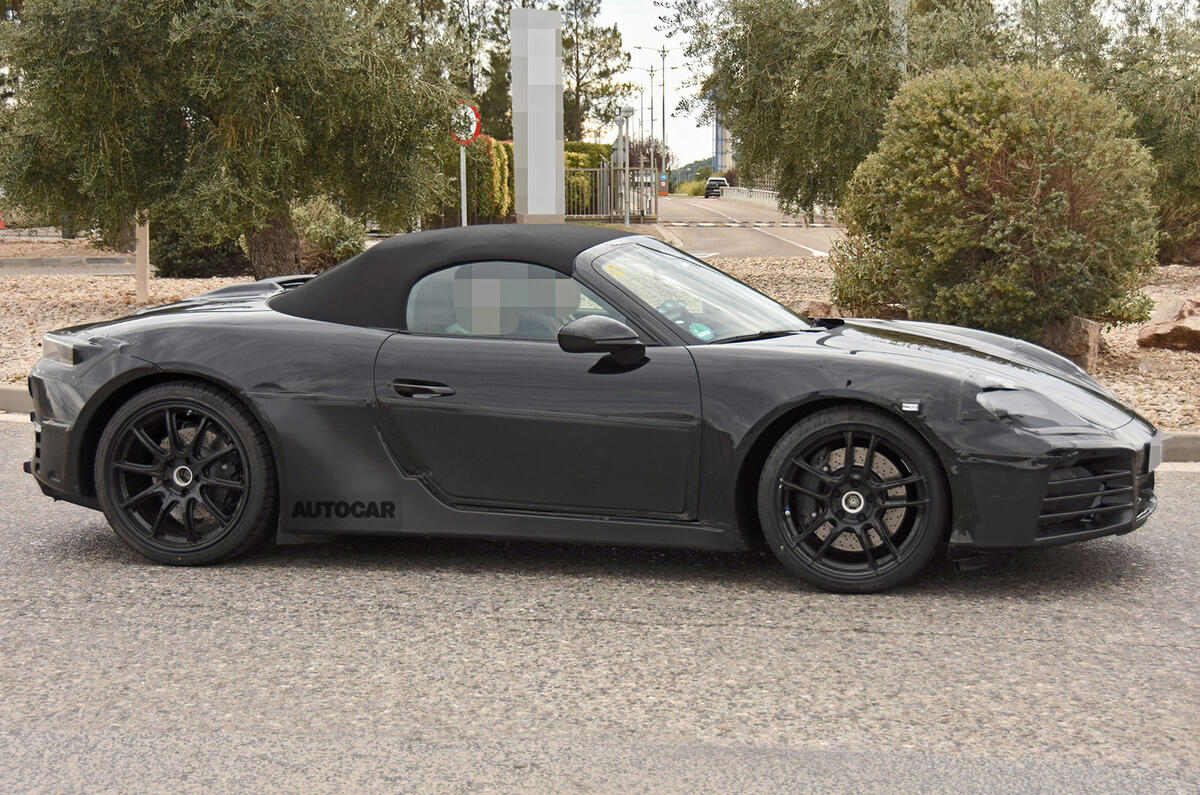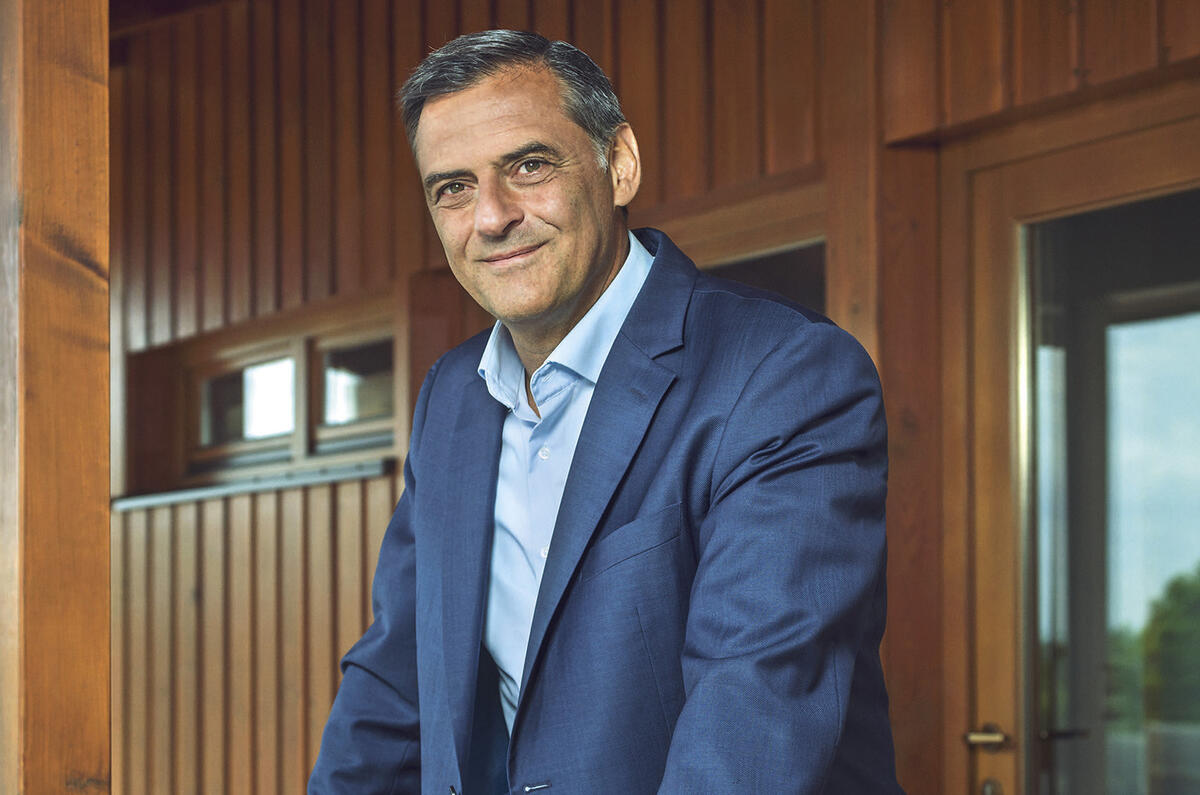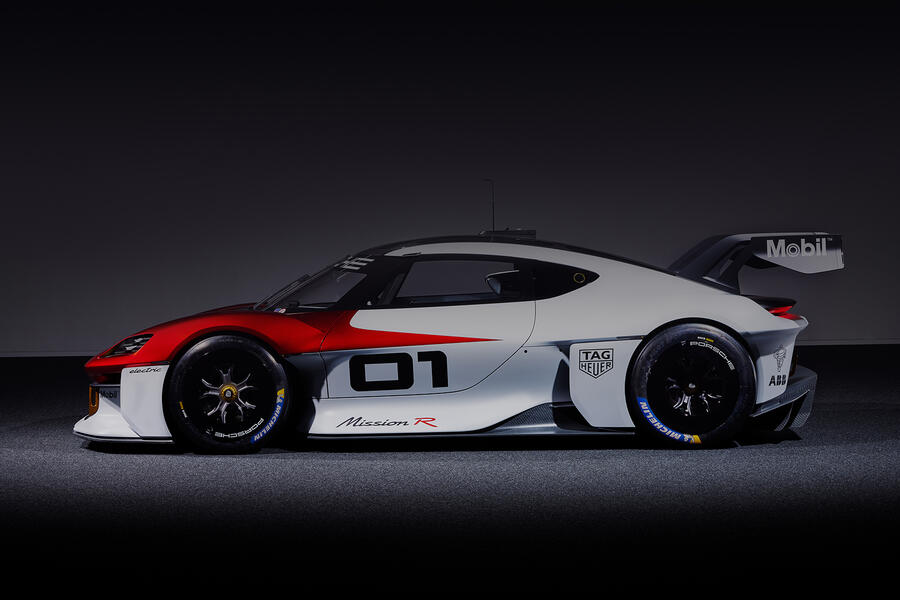The electric successors to the Porsche 718 Boxster and Cayman, due to launch in 2025, will be built on the same production line as the combustion-engined models.
The Stuttgart manufacturer has just begun a major £220 million upgrade to its main Zuffenhausen production plant, with a major focus on the production line where the current boxer-engined 718 models are built
It will be transformed into what Porsche calls a 'flexiline' using new autonomously guided vehicles, which will allow two different generations of vehicle using two different powertrains to be built alongside each other.
The confirmation that the next full-electric 718 generation will be made alongside the ongoing petrol versions showcases how the machines are tipped to maintain similar size, styling and philosophy – similar to how Porsche is launching a new Macan that is a wholly different model from its ICE sibling.
Prototypes of the next-generation Porsche 718 Cayman and 718 Boxster have previously been spied testing. The machines are set to adopt a bespoke electric sports car platform that is designed to mimic the current combustion cars’ mid-engined characters and that could go on to underpin future Audi and Lamborghini models.
It has been confirmed that Porsche intends the next-generation 718 duo to be offered exclusively with electric drivetrains and to be on sale by the middle of the decade. The electric two-seaters will be the third electric model line in the Porsche line-up, joining the Taycan and the Macan EV. A Cayenne EV is set to follow in 2026.
Spy images of the 718 Boxster EV give a close look at what appears to be the fifth-generation, or '983', Boxster in prototype form but with seemingly production-ready styling - at least at the front and rear. While the shots showed no obvious giveaways to a zero-emission powertrain, Autocar's spies said that the exhaust outlets were a red herring, and the visible headlights and rear light bar are designs shared with the Porsche Taycan and upcoming Porsche Macan EV. Porsche declined to comment on the spy shots.
Porsche's earlier Mission R concept gave clues as to the company's plans for electric sports cars, and indeed the lighting details seen on these prototypes bear a resemblance to that car, but the side profile is much closer to the Boxster, which has been on sale since 2016. The company is aiming for pure-EVs to account for 50% of its global sales in 2025 and 80% in 2030.
Using a novel battery arrangement referred to as the ‘e-core’ layout, Porsche’s entry-level sports EVs will offer as low a seating position and centre of gravity as possible, in line with their dynamic billing.













































Join the debate
Add your comment
Cars for the nxt generation?, yeah, I think this, we can drive the ICE Cars.
For the first time, I feel quite lucky to be old, and to have enjoyed the heyday of combustion cars. I have a Tesla Modal 3 Performance, and while there is nothing much wrong with it, I'm left utterly uninspired, electric cars just leave me cold. As a consequence I've risked my relatively small savings pot in a 997GT3RS as my last car which will hopefully fulfill my motoring needs for the next ten years ( hopefully ) until I'm too old or concidered too old by the authorities to drive. I've also been lucky enough to run an Alpine A110 for the last six months, and with some superb mods from Life 110, managed to turn it into a very competent road and track car, and its humble four cylinder Renault engine is so much more inspiring than any sort of electric traction . Electric cars are for a new generation who will never know the joy of internal combustion. Great to read the comments of other here, thank you .
I would echo your sentiments Ravon. Drove a Taycan Turbo for a few days last year whilst the GT4 was getting its tranny replaced and aside from the immediate acceleration at low speeds it did absolutely nothing for me. Great piece of kit, don't get me wrong, would probably satisfy anyone not particularly interested in driving or the driving experience and just sees a car as a way to get from A to B, and lets be honest that's by far the majority of new car buyers. 997 GT3RS will be spectacular!
"Close look" at a vehicle 3yrs from production of which no details have been confirmed by Porsche, save it will be an EV. How's that a "close look"?